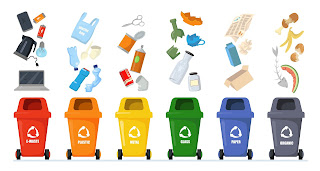What Really Happens to Trashed Clothes—and What You Can Do About It
We all have them: shirts with stains that won’t come out, jeans with torn knees, socks with holes, and outdated fashion pieces we wouldn’t be caught wearing again. These "trashed clothes" usually end up in the garbage. But what really happens when we throw our clothes away—and is there a better option?
The Scale of the Problem
In the U.S. alone, over 11 million tons of textile waste end up in landfills every year. Globally, it’s an even more staggering number. Much of this waste is made up of trashed clothes—items that are damaged, out of style, or simply unwanted. While donating to thrift stores is often a go-to option, many items are in too poor a condition to be resold and are ultimately discarded.
The issue with trashed clothes goes far beyond overflowing landfills. Most textiles today contain synthetic fibers like polyester, which take hundreds of years to decompose. During that time, they can leach harmful chemicals and microplastics into soil and water systems, contributing to environmental pollution and harming ecosystems.
Why Clothes Get Trashed
There are several reasons why clothing ends up in the trash:
-
Fast Fashion: With the rise of cheap, trend-driven clothing, people are buying more and wearing items fewer times before discarding them.
-
Wear and Tear: Daily use, improper washing, and low-quality materials lead to quicker breakdowns.
-
Perception of Usefulness: A small tear or stain often convinces people that the item is no longer useful—even if it could be repaired, repurposed, or recycled.
-
Lack of Awareness: Many don’t know that even damaged clothes can be recycled or upcycled, leading to unnecessary disposal.
The Impact on the Planet
When trashed clothes go to landfills or are incinerated, they release greenhouse gases like methane and carbon dioxide. The dye and chemical treatments used in manufacturing also pose environmental hazards when they seep into the ground or are released during burning.
Moreover, textile production itself is resource-intensive. It takes over 700 gallons of water to produce a single cotton shirt. Trashing that shirt means all those resources were used in vain, contributing to water scarcity and carbon emissions without any lasting value.
Rethinking the Lifecycle of Clothes
So what’s the alternative? There are several more sustainable paths for dealing with trashed clothes:
-
Textile Recycling: Many municipalities and private organizations offer drop-off locations for textile recycling. These items are shredded and used for insulation, carpet padding, and industrial rags.
-
Upcycling: Transforming old clothes into new items like tote bags, pillow covers, or patchwork garments gives them a second life.
-
Clothing Repair and Alteration: Small fixes like sewing buttons or patching holes can extend the life of a garment.
-
Creative Projects: Artists and DIYers have long turned old clothing into quilts, art, or fashion-forward remakes.
The goal is to think beyond the trash can and consider how every item can be part of a circular system.
One Brand Making a Difference
When it comes to responsible clothing disposal, SwagCycle is helping businesses take charge of their branded merchandise and apparel waste. Rather than sending trashed clothes and outdated promotional items to landfills, SwagCycle helps brands recycle, upcycle, or donate them responsibly. By closing the loop on apparel waste, they make it easier for companies to align with sustainability goals while minimizing environmental impact. If you're part of an organization wondering what to do with your surplus swag or old uniforms, SwagCycle is your go-to partner for keeping trashed clothes out of the trash.




Comments
Post a Comment